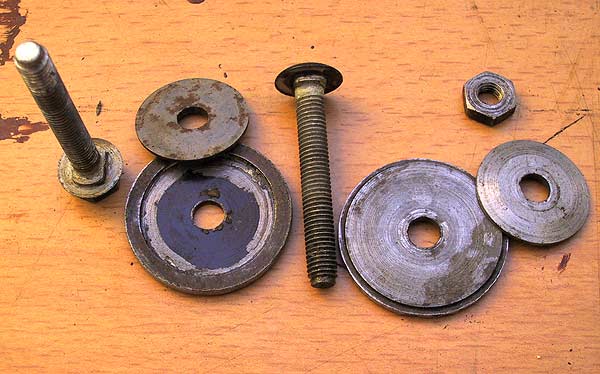 |
This is where the money would start to disappear if the job was being done by a professional. The wheel balance weights are attached to the rims by coach bolts, base plates, inner washers and lock nuts. The bolts need to have dyes run down the threads to remove decades' worth of rust, dead rubber, dried grease, lead chippings and cross-threading. The other metal bits will require filing and buffing prior to painting. |
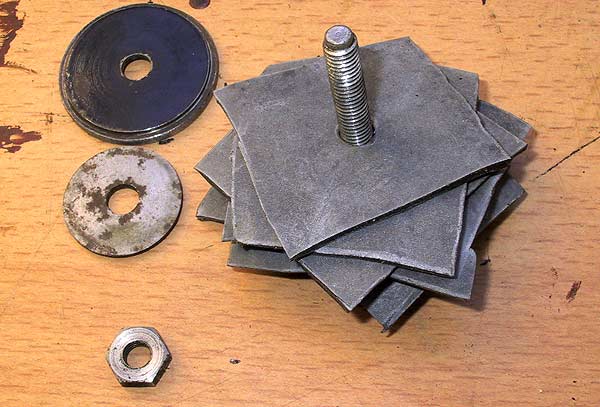 |
The base plate is sealed against the wheel rim by a thin rubber gasket. Here, a set of gaskets is being made from squares od innertube rubber. The sheets are sandwiched between two sets of washers and base plates. |
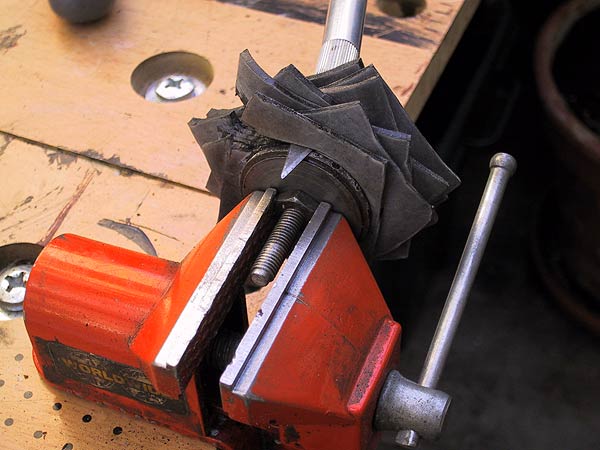 |
The rubber sheets are clamped by the two base plates and then trimmed to shape using a scalpel. If the blade is rested against both base plates the rubber can be cut to a reasonably accurate shape. Just to add to the misery some of the washers and base plates were missing, which meant an hour or so on the lathe to fabricate copies. |
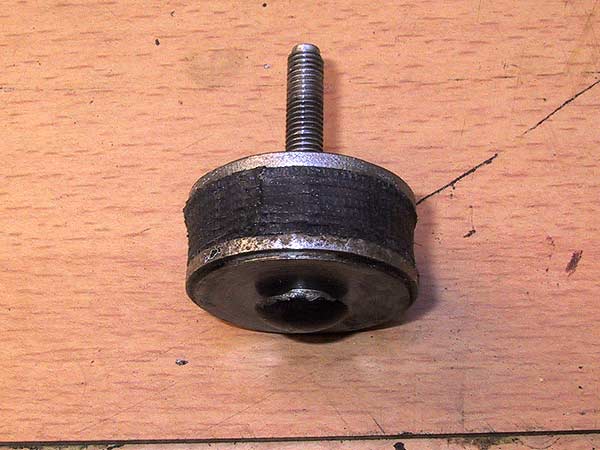 |
Straight off the scalpel. If the rubber edges are buffed with coarse sandpaper (glasspaper) they will become smooth and regular in appearance; losing all evidence of being cut from sheet. |
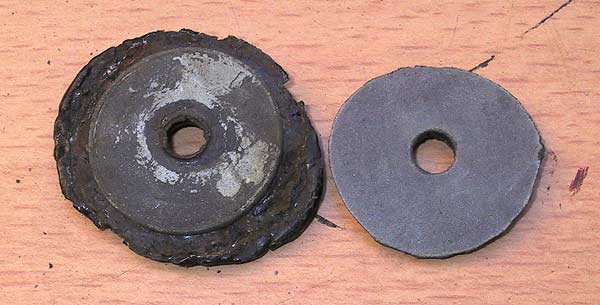 |
Before and after. The new piece has yet to be sandpapered to give it that 'new' look. (Not that it will be seen again for another 40 or so years.) Each wheel has 3 weights. 5 wheels means 15 clean-up and paint jobs. Several hours of work remain before the tyres can be fitted.
|